Welcome to the third edition of ‘Ochre Archives’. Our farm continues to reveal its features and secrets to us, as you will see in what follows.
Findings from recent trips to the farm
Trees and Shrubs
There is a large Red Gum that has developed what in we’ll call large calluses, caused by branches growing out and rubbing against and in time ‘welding’ to the rocks creating additional anchor points. The callous in the photo is approximately 600 mm across.

Many of the native species are currently in flower. Mikla Lewis has kindly informed us that the species with blue flowers in the picture below is Rock Isotome (Isotoma petraea) which was used by Aborigines as a substitute or addition to 'Pituri' - "a highly valued stimulant used for ceremonies, operations, socially and for spiking waterholes to aid the capture of game".
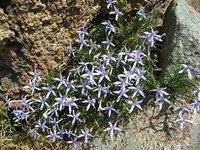
The Yellow Box (Eucalyptus melliodora) trees have an amazing volume of flowers on them, especially given the current dry conditions.
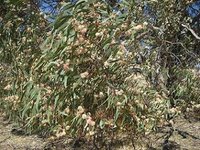
Rock Formations
Along one of the ridges are 3 outcrops of rocks that are akin to packs of playing cards on their sides. The one in this photo has a shelter under it, used by species such as Red-Necked Wallabies and Euros.
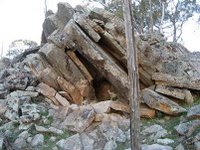
Reptiles
Geckos are regularly seen under bark in fallen timber. This one hangs around the house and is deadly on moths!
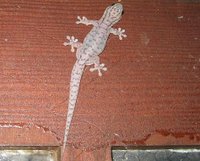
We’ve knick-named the large Lace Monitor (Varanus varius), also known as a Goanna, that lives in the trees in the front paddock “The Boss”. It is about 1.5 metres long and occasionally wanders around the house and sheds like it owns the place!
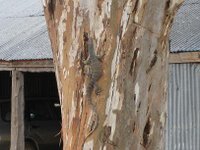
Native Animals
It’s not that often we get to see Echidnas on Ochre Arch, but they are around. We snapped this one down the creek in the front paddock after dark last week.

Birds
The Crested Pigeons that nest in the car shed have successfully raised a new generation:
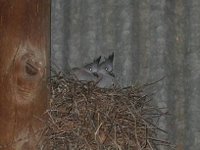
Three more bird species have been identified, taking the total to 61 so far:
• Black-faced Cuckoo-shrike (Coracina novaehollandiae)
• Leaden Flycatcher (Myiagra rubecula)
• Brown Thornbill (Acanthiza pusilla)
Insects
Following light rain in early September some native bees invaded the rain gauge on the property.
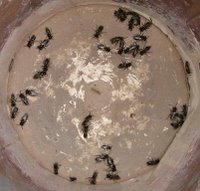
Dung beetles were also ‘weaving their magic’, digging manure deep into the soil and creating their tunnels that improve aeration and water infiltration.
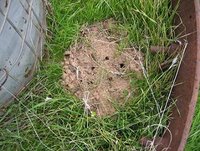
In Closing
There’s much more we could tell you but in the interest of space and time that will do for know. Phillip continues to compile other more in depth articles on his blog site, http://ochrearchives.blogspot.com.
Once again, feedback is most welcome, via email to pdiprose@optusnet.com.au. Best wishes for the festive season.
Kind regards… Phillip & Jan Diprose
Link to: Ochre Archives Newsletter - Issue No. 1
Link to: Ochre Archives Newsletter - Issue No. 2
4 comments:
very informative
Greats photos, it is very interesting and I am in a hurry to be there to be able to see that of my own eyes!!
Great work Phil and Judy, I enjoy sharing your awakening! The links to information sites on species are very usefull.
Really great stuff Phil and Judy.....great to read stuff from some kindred spirits who share a common interest in protecting our environment ! Well done guys !
Post a Comment